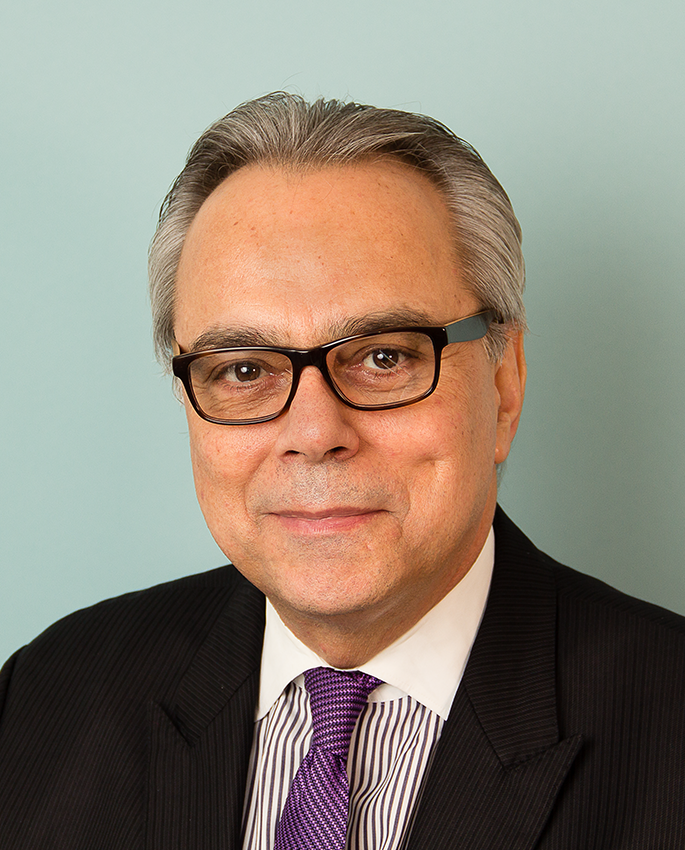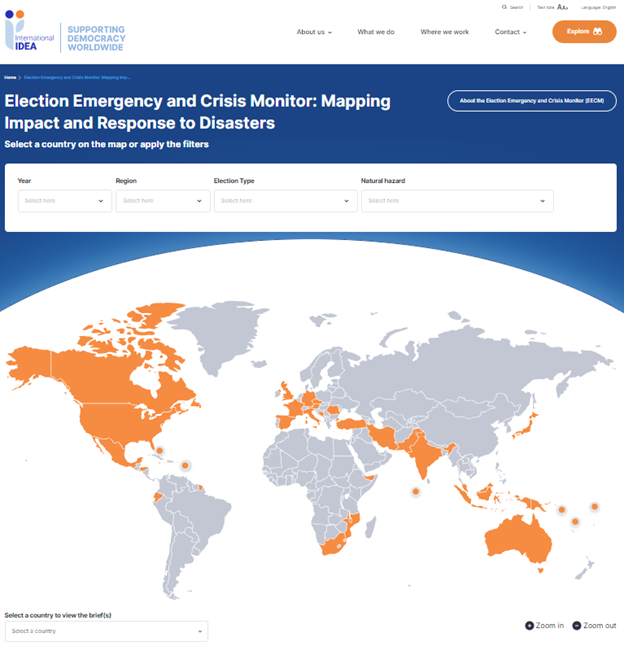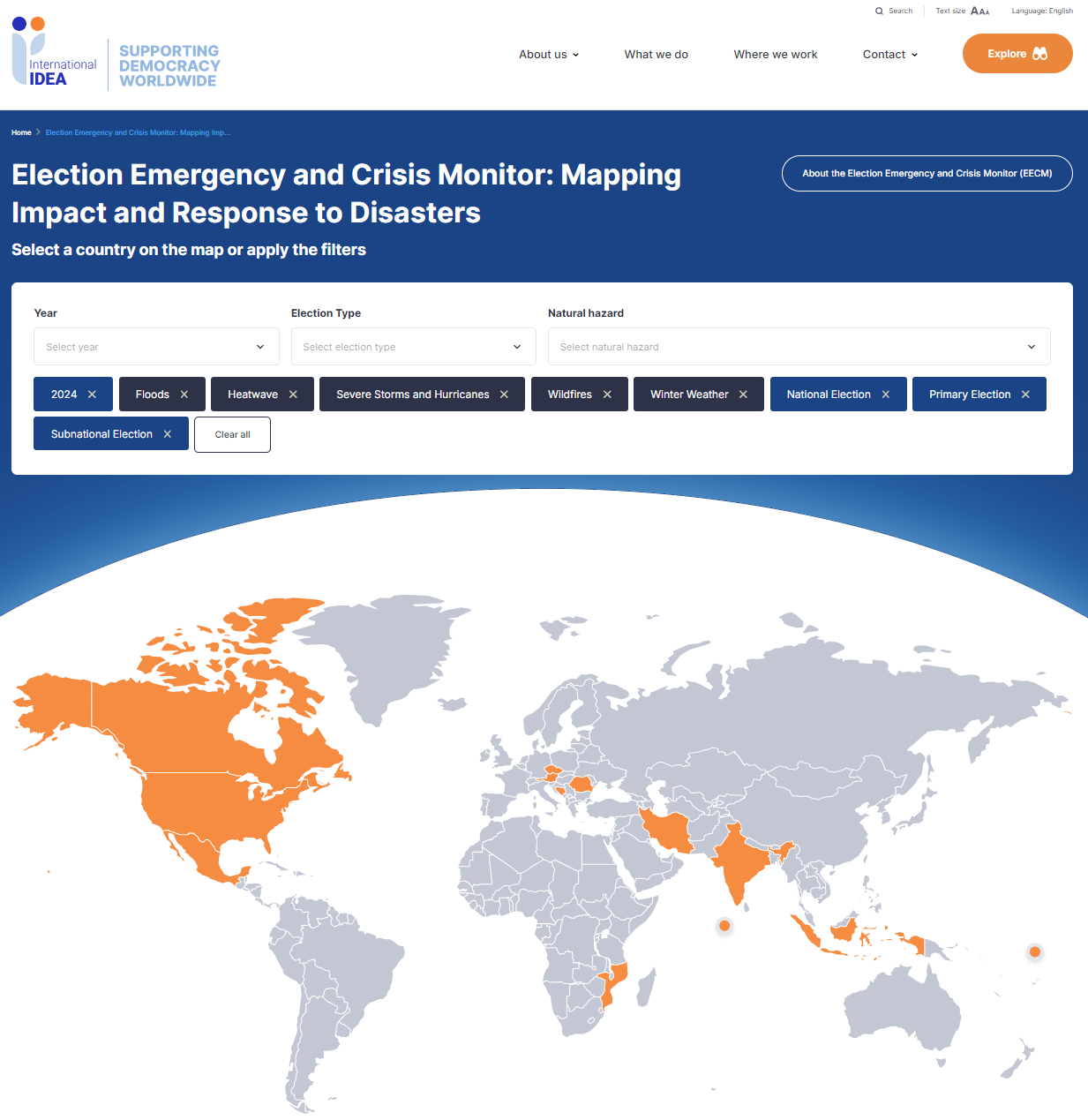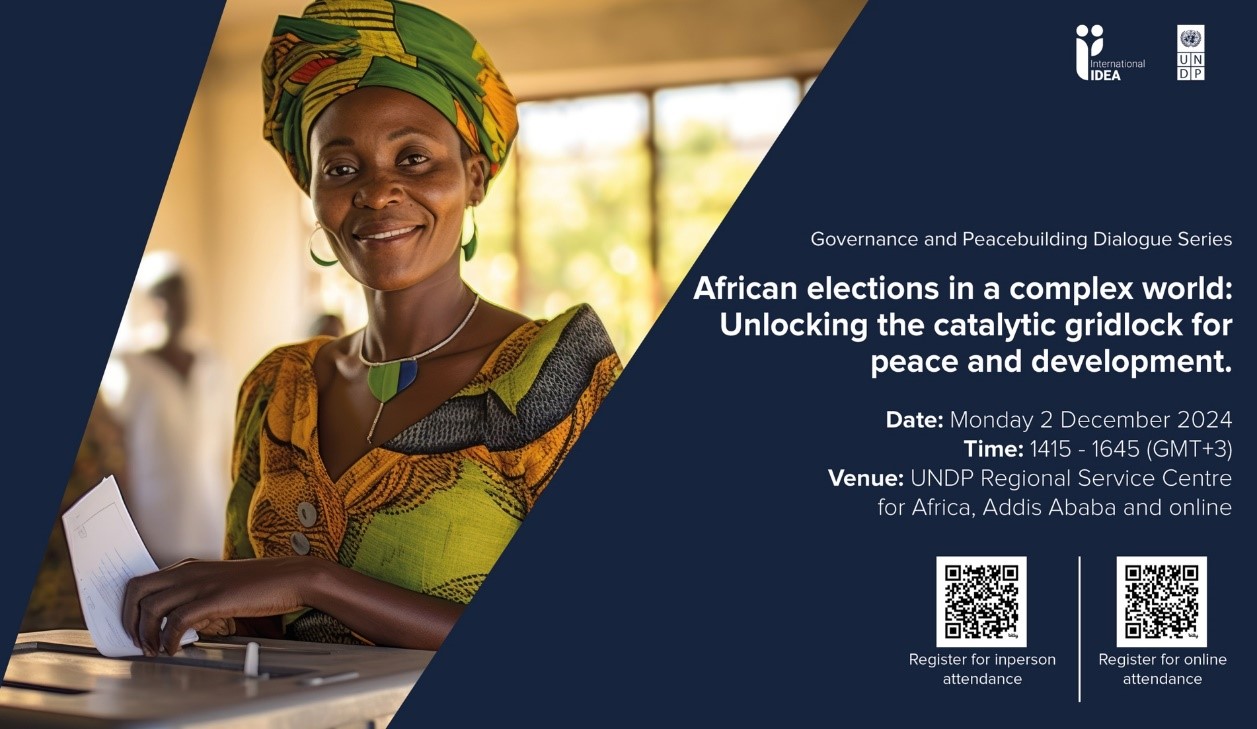Latin America: political change in volatile and uncertain times
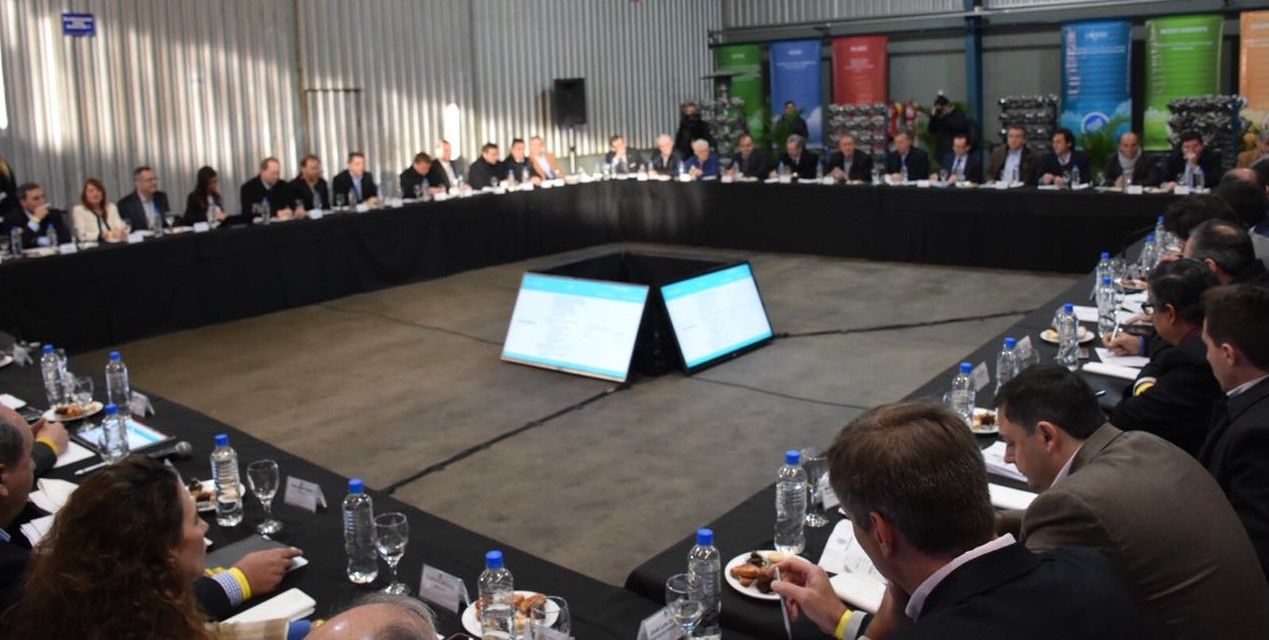
Having just passed the midway point of 2019, now is an opportune moment to take stock of Latin America. These first eight months confirm that it has been an economically mediocre, socially tense, electorally intense, politically polarized, and increasingly complex year in terms of governability.
Disclaimer: Views expressed in this commentary are those of the staff member. This commentary is independent of specific national or political interests. Views expressed do not necessarily represent the institutional position of International IDEA, its Board of Advisers or its Council of Member States.
Este comentario está disponible en Español.
A Volatile and Challenging Regional Context
The current political-electoral context in Latin America is characterized by high uncertainty, volatility, polarization, and populist trends. In addition to the serious crises in Nicaragua and Venezuela (to which there appear to be no democratic or peaceful end in sight), we must focus on the tense situation affecting the Northern Triangle countries, in particular, the high levels of crime, corruption and impunity, marked institutional weakness, the growing penetration of drug trafficking and organized crime, and the constant pressure/extortion on the part of President Trump as regards Central America and Mexico due to the migration question, and a laundry list of other issues. We must also take into account the difficulties facing new presidents Jair Bolsonaro of Brazil, Andrés Manuel López Obrador of Mexico, and Iván Duque of Colombia; President Martín Vizcarra’s risky proposal to move up Peru’s general election by one year; and the serious crisis facing Argentina following the surprising results of the recent presidential primaries (PASO) and the increased tension at the Colombian-Venezuelan border. As we can see, there is never a dull moment in the region.
In terms of the economy, regional growth will continue to be mediocre: 0.6% according to the IMF figures as of July, acknowledging the great diversity among Latin American countries. As a result of this anemic economic growth, poverty will stay slightly above 30% (regional average), the reduction of inequality will remain stagnant, and the labor market will continue to be unable to generate the quality jobs the region needs.
Political culture indicators also herald bad news. All regional polls highlight the sentiment of democratic fatigue throughout Latin America, precisely 40 years after the beginning of the Third Wave of democracy (1978-1979). The data from the 2018 Latinobarómetro survey shed light on the midlife crisis Latin American democracy is experiencing: support for democracy fell to 48% (the lowest since 2001), indifference between democracy and authoritarianism rose from 16% to 28%, and dissatisfaction with democracy climbed from 51% to 71%, while satisfaction dropped from 44% to 24%.
Predictably, this sentiment of discontent and frustration negatively impacts trust toward political institutions, especially legislatures and parties. Both institutions have the lowest levels of citizen legitimacy in the region—21% and 13%, respectively—according to the 2018 Latinobarómetro survey. These figures confirm that voters are increasingly distancing themselves from parties (58% of Latin Americans say they have no party), and that there is widespread civil unrest and anger toward politics and ruling elites. Consequently, “politics has entered relatively uncharted territory” (Daniel Innerarity).
Also to be expected, this toxic combination of factors has negative repercussions for the quality of democracy. According to the 2018 Democracy Index published by the prestigious British weekly The Economist, only Costa Rica and Uruguay qualify as full democracies. Ten countries are considered flawed democracies (Argentina, Brazil, Chile, Colombia, the Dominican Republic, Ecuador, Mexico, Panama, Paraguay and Peru) and four countries—Bolivia, Guatemala, El Salvador and Honduras—are classified as hybrid regimes. Finally, Cuba, Nicaragua and Venezuela are characterized as authoritarian regimes.
The 2019 Election Calendar
The third and final stage of the electoral super-cycle—a marathon of six presidential contests—takes place in 2019. By the end of the year, 15 of the 18 countries in the region will have held presidential elections in just 36 months (2017-2019).
In 2017, elections were held in Chile, Ecuador and Honduras (the Honduran elections marked by low levels of electoral integrity). In 2018, there were elections in Costa Rica, Paraguay, Venezuela (an electoral farce), Brazil, Colombia and Mexico. The 2019 electoral calendar is divided into two stages: three Central American races already held during the first half of the year (El Salvador, Guatemala and Panama), and another three in South America scheduled for October (Bolivia on the 20th and Argentina and Uruguay on the 27th).
In the Salvadoran presidential election held on 3 February, young anti-establishment candidate Nayib Bukele won comfortably in the first round, inflicting a harsh defeat on the two hitherto dominant Salvadoran parties. Despite his sizeable victory, Bukele, who took office on 1 June, will have to address an agenda fraught with major challenges, among them increasing economic growth, reducing poverty, improving conditions of citizen security, and fighting corruption head on, all combined with complex conditions of governability, as the governing party is in the minority in the legislature.
In Panama’s 5 May elections, Laurentino Cortizo (Partido Revolucionario Democrático, center-left) narrowly defeated Rómulo Roux (Cambio Democrático, center-right). As has happened since 1989, power alternated. The difference compared to the recent past is that Cortizo, who took office on 1 July, holds a majority in the National Assembly thanks to an alliance with its partner the Movimiento Liberal Republicano Nacionalista (MOLIRENA).
The first round of Guatemalan elections took place on 16 June, and was characterized by a high level of uncertainty, marked fragmentation, and excessive bureaucratic and judicial intervention in the political process. Of the three candidates that were leading in the polls—Zuri Ríos, former Attorney General Thelma Aldana, and former First Lady Sandra Torres—only Torres was able to stay in the race, while the Constitutional Court blocked the other two from running. The campaign was marked by high uncertainty, accusations, and bureaucratic and judicial intervention in the political process. Likewise, following the first round, there were allegations of fraud, accusations of bad practices, and requests to annul the vote. The Supreme Electoral Tribunal dismissed these claims and proclaimed Sandra Torres (first place with 25% of the vote) and Alejandro Giammattei (second place with nearly 14%) as the two candidates chosen to participate in the 11 August runoff. Giammattei won the runoff and will take office in January 2020. He will face five main challenges that particularly stand out: immigration (due to strong pressure by Trump to impose “safe third country” status upon Guatemala), corruption (vis-à-vis the CICIG exiting the country, as its mandate was not renewed), violence, employment, and governability (as he will be in the minority in the new Congress).
The Southern Cone Elections
The three South American elections to be held in October are also characterized by high levels of uncertainty and polarization.
On 20 October, Bolivian President Evo Morales (Movimiento al Socialismo) will seek his fourth consecutive term. The defeat Evo suffered in 21 February 2016, referendum had closed off the possibility of running again. However, Morales forced an interpretation of the Constitution, and with the help of the Constitutional Tribunal and the Electoral Tribunal (both under his influence), he succeeded in being qualified to seek a new term. The latest polls are varied. One poll from early September gives Evo an advantage of seven points over former President Carlos Mesa (34% to 27%), the main opposition candidate and leader of the Comunidad Ciudadana movement and has Oscar Ortíz (Bolivia Dice No) in third place with 13%. Another recent poll, from Ipsos, conducted in nine capital cities and El Alto, cuts Evo’s advantage over Mesa to three points (31% to 28%), with Ortiz in third at 13%. This last poll indicates that in the event of a second round, Mesa would defeat Evo by ten points (46% to 36%). In Bolivia, a second round is required if no candidate wins at least 50% plus one vote, or if no candidate receives at least 40% of the vote with a difference of at least 10% points over the second-place finisher.
As we can see, the election is up for grabs. After 13 years of Evo’s government, the opposition has the opportunity to take power, provided they are able to unite (a very difficult objective going into the first round) and win over undecided voters, who, given their large numbers (22%), will determine the outcome.
In Argentina, the 27 October elections will be held in a context of deep economic crisis and high political volatility and uncertainty. The surprising and overwhelming results of the recent open, simultaneous, and obligatory primaries (PASO) on 11 August set off a true political earthquake. The sizeable victory of the Alberto Fernández-Cristina Fernández de Kirchner (Frente de Todos) opposition ticket over Mauricio Macri and his running mate Miguel Angel Picheto (Juntos por el Cambio) by 16 points (47.7% to 31.7% of the valid votes cast) weakened the president politically and left Fernández as the clear favorite to win the 27 October elections. All recent polls indicate that it will be very difficult for Macri to reverse this trend. However, the final word has not yet been spoken. We will have to wait until Sunday, 27 October to see if the anger vote (a result of Macri’s mediocre administration) will prevail over the fear vote (in the face of a possible return of kirchnerismo), or vice versa. It is also unclear if a runoff—scheduled for 24 November—will be necessary to determine the next president. In Argentina, the second round will take place if the winner of the first round does not obtain 45% of the vote (blank ballots are not counted), or if the winner does not obtain 40% of the vote with at least a 10% advantage over the second-place finisher. With these rules of the game, the objective for pro-government forces is to avoid a first round victory for Fernández in order to try to defeat him in the second round by building a broad anti-kirchnerismo coalition. The only certainty is that the economy and governability will be the major challenges facing the next president, as whoever is elected will likely not enjoy a legislative majority in both chambers of Congress, and will have to address a very complex and serious economic and social situation.
Also on 27 October, Uruguayans will hold their most uncertain and competitive general elections since 1989. The Frente Amplio is showing signs of being significantly worn down after three consecutive terms in government (15 years), the economy is in trouble, and the party does not have any of its three main leaders as its candidate: former President Pepe Mujica, former minister Danilo Astori, or current President Tabaré Vásquez. The primaries held on 30 June determined the candidates for the three main parties: Daniel Martínez (Frente Amplio), Luis Alberto Lacalle Pou (Partido Blanco), and Ernesto Talvi (Partido Colorado). According to a recent poll from Factum (first week of September), Martínez leads with 39%, followed by Lacalle Pou (26%), and Talvi (18%). The same poll indicates that the most likely scenario is the need to hold a ballotage (runoff) on 24 November, between Martínez and Lacalle Pou, and that the new Parliament will be more plural in terms of the number of parties.
The Main Trends of the Super-Cycle
Drawing from the 12 elections held to date (out of the 15 that comprise the super-cycle), we are able to identify the following trends:
- The elections of anger. Almost all of the elections are characterized by a high level of citizen unrest with respect to politics and the incumbent political forces, which is why I refer to them as the “election of anger”. In several countries, this sentiment of unrest generated an anger vote, a vote rejecting the government and traditional parties tied to the emergence of anti-establishment candidates with a strong personalist slant. Jair Bolsonaro in Brazil, Andrés Manuel López Obrador in Mexico, and Nayib Bukele in El Salvador are the three main examples of this trend.
- Weak political institutions with low levels of credibility and legitimacy, especially political parties and legislatures, increase the possibility for the emergence of candidates with a populist and anti-traditional elites discourse, highly personalized, a sort of “messiahs” or “saviors” who would supposedly come to fight against “old politics and its vices.” In many countries, traditional parties are quite depleted and worn down.
- High levels of uncertainty, volatility, and polarization, resulting in centrist options not viewed as an attractive alternative in the vast majority of elections (as happened in Brazil and Colombia, and may also occur in Argentina).
- The middle class—demanding, impatient, and more pragmatic than ideological—played a key role by supporting and voting for candidates in tune with their demands that promised fast concrete results.
- The vote to punish ruling parties prevailed over continuity. Power alternated in the three main economies of Brazil, Colombia and Mexico, as well as in Chile, El Salvador, Guatemala and Panama (seven of the 12 elections held to date), while the ruling party retained power in Costa Rica, Ecuador, Paraguay, Honduras, and Venezuela (the last two by way of reelection).
- Consecutive reelection only occurred in two countries, and in both cases, it exacerbated or triggered severe political crises and was unable to generate unquestionable legitimacy. The first was the electoral farce in Venezuela, where Nicolás Maduro was reelected in a general election completely lacking legitimacy, and the second was in Honduras, where the reelection of Juan Orlando Hernández was also very much questioned due to the high number of serious irregularities. In two of the three elections to be held in October, the current presidents will seek consecutive re-election, Evo in Bolivia and Macri in Argentina.
- Runoffs are becoming more frequent for determining who will be president. Seven of the 12 elections seemed likely to require a second round, and in six of these seven elections (Brazil, Chile, Colombia, Costa Rica, Ecuador and Guatemala) a runoff was needed to choose the president, El Salvador being the only exception. In two of these elections, Costa Rica and Guatemala, there was a reversal of results in the second round, i.e., the winner of the first round was defeated in the runoff.
- Governments with legislative minorities. With the exception of Mexico, where Andrés Manuel López Obrador obtained a majority in both legislative chambers, and Panama, where President Laurentino Cortizo enjoys a majority thanks to an alliance with MOLIRENA, no other presidents elected during the super-cycle have a legislative majority. We anticipate that this will make governing more complicated and the approval of strategic reforms (fiscal, employment, pension, etc.) that many of these countries urgently need more difficult.
- The serious corruption scandals throughout the region (aggravated in some countries by Lava Jato and Odebrecht) frequently tied to irregular political financing, and high levels of citizen insecurity were two issues present in almost all campaigns.
- The normalization of lies (fake news) and disinformation in electoral campaigns. In several of these elections, social media played an increasingly important role (for example, the intensive use of WhatsApp in Brazil), progressively taking the place of traditional media. This presents new and important challenges in terms of regulations and the oversight that electoral authorities should carry out.
- Evangelical groups are gaining more influence, as seen in a significant number of these elections. In 2018, the most notable instances were in Brazil, Costa Rica and Mexico.
- Backsliding as regards gender parity among the presidents of the region. With the conclusion of Michelle Bachelet’s term, plus the fact that in none of the 15 elections of the election super-cycle has any woman been elected (nor will any be elected in the remaining elections), there has not been a woman president in Latin America since March 2018.
Taking Stock: The results of this electoral super-cycle have politically reconfigured the region. In South America, we observe two main trends. The first one: Macri’s unexpected victory in 2015 marked the beginning of the end of the “pink tide’ and the quick off of a new political cycle favorable to center-right and rightist governments. This process continued with the successive victories of Pedro Pablo Kuczynski in Peru in 2016, Sebastián Piñera in Chile in 2017, and the victories of Mario Abdo Benítez (Paraguay), Iván Duque (Colombia), and Jair Bolsonaro (Brazil) in 2018. The second trend: the weakening of ALBA group.
However, prudence requires that we await the results of the three remaining elections in Bolivia, Argentina, and Uruguay before issuing a definitive verdict on whether South America has entered a new political cycle with right-wing predominance, or, if to the contrary, the current ideological heterogeneity shall remain, or even if we would be on the verge of a return to progressive governments in some countries.
To put it more bluntly: Would the defeat of Macri, if it comes to pass, be anticipating, as some analysts think, the return of leftist or center-left governments and the end of pro-market policies in several countries of South America? Not necessarily. What we are experiencing, in my opinion, especially in South America, is a greater level of volatility and the replacement of the long cycles of government of past decades to shorter cycles due to the profound and swift wearing down that currently affects the presidents, as they have to govern in increasingly complex and difficult contexts. Let’s look at some examples: Macri is beset by a serious crisis that is jeopardizing his re-election; Abdo Benítez was able, at the last minute, to elude an impeachment that could have brought his presidency to an early end; Bolsonaro and Duque have had a very complicated start to their respective administrations at the same time as they experience a major decline in their levels of popular support; Vizcarra, who took over as president due to the early and traumatic exit of Kuczynski, is currently beset by multiple challenges that led him to propose bringing the presidential elections forward; Piñera, despite having an acceptance rate of economic growth in the regional context (2.5%) is facing citizen discontent, political polarization, difficulty advancing his agenda of reforms, and complex governability, the last two aggravated by not having a majority in Congress. Yet this adverse picture affects not only the center-right and rightist governments, but also the leftist and center-left governments in power in in Bolivia Ecuador, Uruguay, and specially, in Venezuela.
The victories of Carlos Alvarado in Costa Rica, Andrés Manuel López Obrador in Mexico, Nayib Bukele in El Salvador, and Laurentino Cortizo in Panama (all center-left), combined with the victories of Juan Orlando Hernández in Honduras and Alejandro Giammattei in Guatemala (both right-wing), demonstrate greater ideological diversity among the governments of Central America and Mexico.
To summarize: 2019 is a year during which the newly-elected presidents must focus their energy on regaining citizen trust; learning to govern within a context of high uncertainty and volatility; and producing quick results to satisfy the high expectations and demands of their citizens. Otherwise, as we have seen in several countries in the region, citizen frustration could trigger an accelerated loss of popular support and an increase in citizens disengaging from politics in a regional context characterized by mediocre economic growth, mounting social discontent, increasing political disaffection, democratic fatigue, high polarization, and populist trends.
